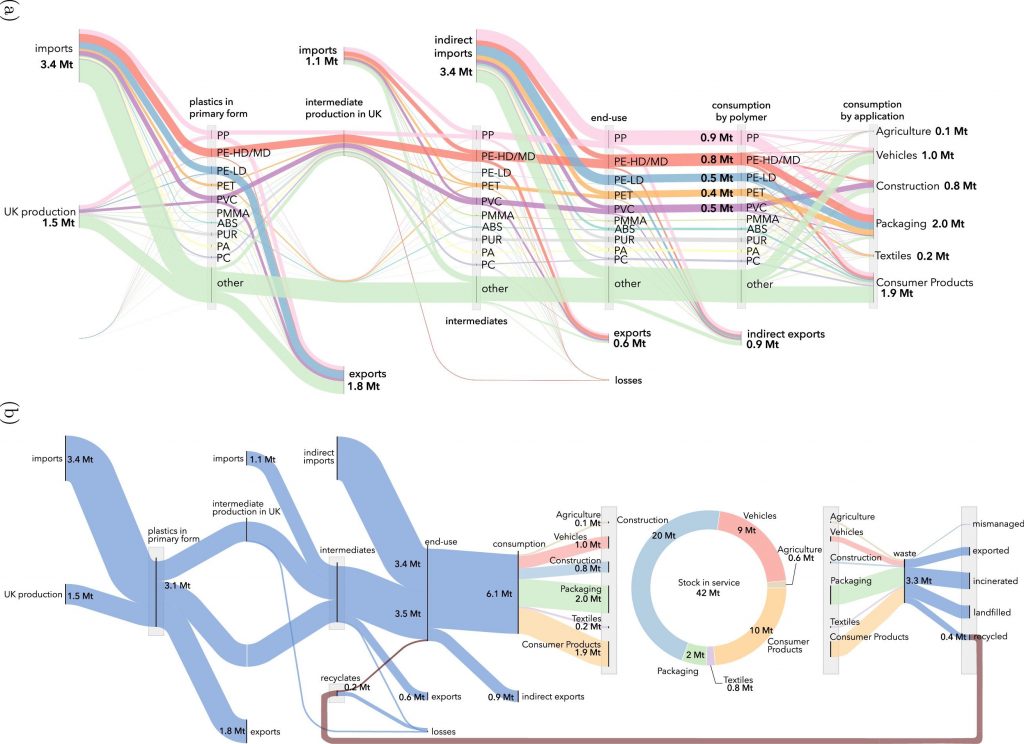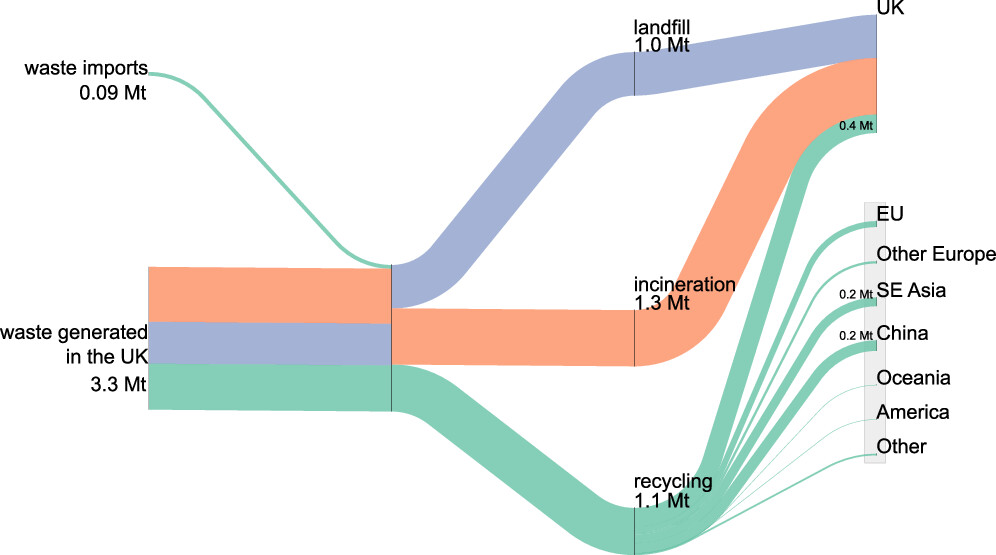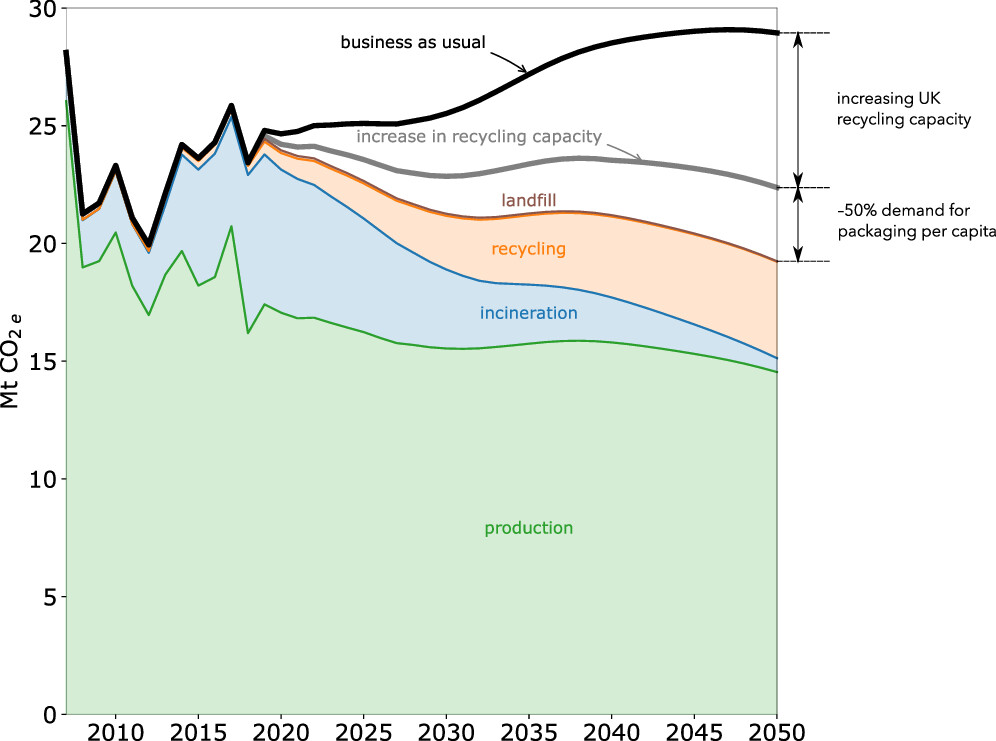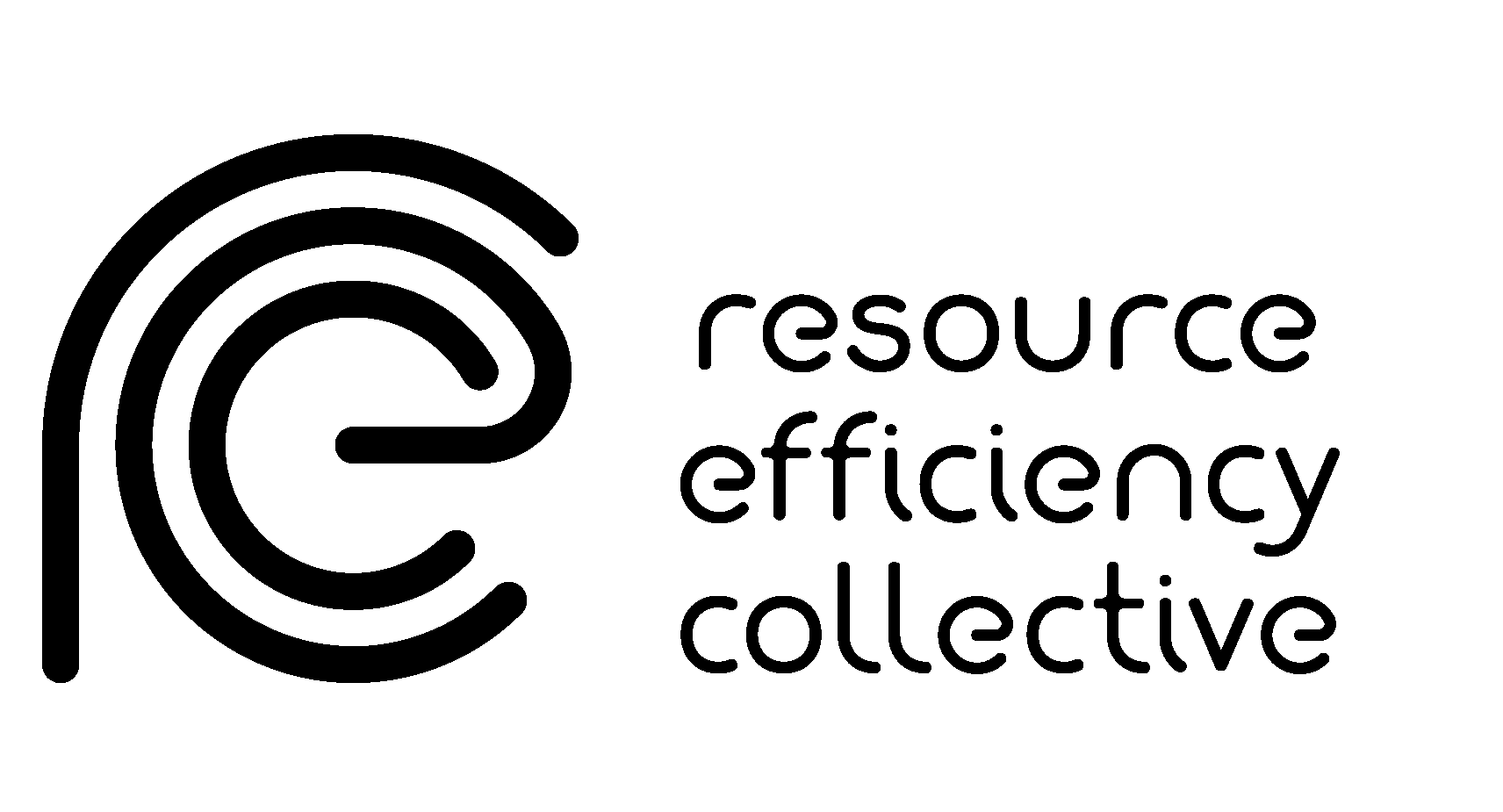What to Do about Plastics? Lessons from a Study of United Kingdom Plastics Flows
New study of UK plastics flows from Michał Drewniok, Yunhu Gao, André Cabrera Serrenho and Jonathan Cullen shows that 1/3 of related GHG emissions could be reduced by increasing recycling capacity and reducing demand.
Plastics are pervasive. We use them everyday in our phones, laptops, clothes, and cars. Plastics have also been found in the most unlikely places, from the human bloodstream to the bottom of the Mariana Trench.
Public concern about the use and disposal of plastic has soared in recent years, catalysed by David Attenborough’s documentary pleas and enduring images of seahorses grasping Q-tips circulating on social media. But alongside issues of marine and terrestrial pollution sits the less visible contribution of plastics to climate change. Greenhouse gas emissions are released when heat is generated for the chemical reactions required to manufacture plastics, and from those reactions themselves. Emissions also result from the management of waste plastic, especially when it is incinerated.
Addressing these environmental impacts, whilst not losing the many benefits plastic products offer to consumers, requires a deep understanding of the complex plastics supply chain. Unfortunately, data on plastics production, use, and disposal are difficult to find. As a result, there have been few attempts to map the flows of plastic feedstocks and products throughout the supply chain. Where material flows have been mapped for plastics, they have often lacked detail for specific products or stages of the supply chain, and have rarely taken account of the stock of plastic products currently in use.
This new study presents a dynamic material flow analysis that covers 464 products, categorised into 11 polymers and 6 types of end-use product. The analysis offers the first detailed map of UK plastics flows that includes polymers, products, applications, and trade flows. We use this map as a model to test the impact of a range of possible actions to reduce GHG emissions. Testing these different interventions allows us to identify which have the most potential to reduce emissions, reduce plastic waste production, and increase the value of plastic waste streams.

The results show that in 2017, around 6.3 million tonnes of plastic were consumed in the UK. Of the plastic waste that was generated, one third was sent to landfill, one third was incinerated, and one third was sent for recycling. But the UK’s domestic recycling capacity is limited to just 0.4 million tonnes per year, meaning that the majority (0.7 million tonnes) of plastic waste earmarked for recycling is sent overseas to be recycled in other countries. Doubts remain about how extensively and effectively exported plastic waste is recycled in destination countries.

We found that only 3% of the current demand for plastics in the UK is supplied by domestically recycled plastics. As plastics demand is set to keep growing into the future, the UK has an imperative and an opportunity to expand its recycling capacity. This would avoid the need to export or incinerate so much waste plastic. It would also reduce the need to import materials to produce virgin plastic, as more of the UK’s demand would be met by secondary production from its own recycled plastic. To reduce greenhouse gas emissions even further, the UK should look to reduce our demand for new plastic production altogether, especially for packaging.

If these two interventions – increasing recycling capacity and halving societal demand for packaging – were combined, emissions from UK plastics could be reduced by approximately one-third by 2050. To reduce emissions further, other strategies would need to be added to the mix, such as designing plastics to have longer lifespans, be more reusable, and easier to separate from general waste streams. Bioplastics could also be part of the solution, though this needs more research – some biobased plastics can even release more GHG emissions over their lifecycles and there are issues over feedstock availability as bioplastics often derive from the same plants as food crops.
Read the full paper from Michał, Yunhu, Jonathan, and Andre here: What to do about plastics? Lessons from a study of United Kingdom plastics flows.
Photo credit:













